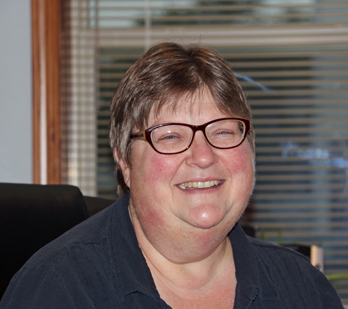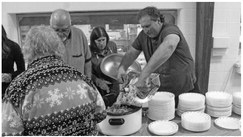The art of pumpkin etching


The cooler mornings are letting us know fall is here. The heavy dew covers the ground and glistens on spider webs, spun intricately in random spots on the lawn. Fallen leaves rustle and crunch satisfactorily, as one leisurely strolls along, their multi-hued colors painting a picturesque scene, as the smell of wood smoke from campfires and outdoor wood furnaces fills the air.
It’s the perfect time to enjoy a day of exploring an apple orchard or pumpkin patch.
I love this time of year. It brings back memories of growing up. My parents always planted a huge garden, along with acres of jewel-toned ornamental corn, Turk’s turban, butternut, acorn and buttercup squashes, and ornamental and crown of thorn gourds.
They also raised Baby Boo pumpkins, which were white miniatures, and Jack Be Little orange miniatures, pie pumpkins and, of course, pumpkins for carving. The pumpkins were huge and perfectly shaped, and the most brilliant pumpkin orange color.
When the carving pumpkins were still young and green, Dad would take a pencil or nail, and gently break the surface of the skin of the pumpkin, writing the names of all the grandkids, so each grandchild would have their own personalized pumpkin.
As the pumpkins continued to grow, the writing scabbed over, or healed, so by the time the pumpkin had turned orange and was ready to harvest, the names appeared slightly raised and were the color of dried corn husks.
Dad got so much pleasure from personalizing pumpkins for friends and customers. Each of us kids also received a pumpkin with our name and year etched on it. That’s one tradition I really miss every year. I don’t know if anyone is familiar with the etching names on pumpkin technique.
The trick is to not write too deeply into the pumpkin and the best time to write on a pumpkin, is when it’s just turning a dark green color. If a pumpkin is written on when it’s a spring green color, the pumpkin will rot, as we discovered through trial and error.
We always planted several acres, so harvesting pumpkins and gourds was labor intensive, and time consuming. Seeing the field full of ripe pumpkins, amidst brown shriveling vines, as steam slowly rises off the patch with the morning sun, is a breathtaking site.
Mom always washed every pumpkin, gourd and squash, ensuring there was no mud or dirt left clinging, taking pride that every piece of produce was sparkling clean.
Dad was a livestock production specialist and agronomist. An agronomist is someone who specializes in soil management and crop production. Dad would calculate feed rations for his customers’ milking herds to assist them in reaching top milk production per cow.
He also took soil samples from fields and had them analyzed, recommending the proper fertilizers and nutrients needed to enrich the soil, therefore increasing corn, alfalfa, wheat, soybean, etc. yield.
Dad was very conscientious concerning his customers and, of an evening, he would drive around to the various fields to check on the crops’ progress. I loved the time I spent with him doing that. I still get a happy feeling in my heart when I come across a farmer combining corn or soybeans.
It brings back all the great memories of my dad. Fall will always hold a special charm for me, as I drive around watching the farmers as they harvest their crops, envisioning how much Dad would enjoy checking their progress.
Happy harvesting.

